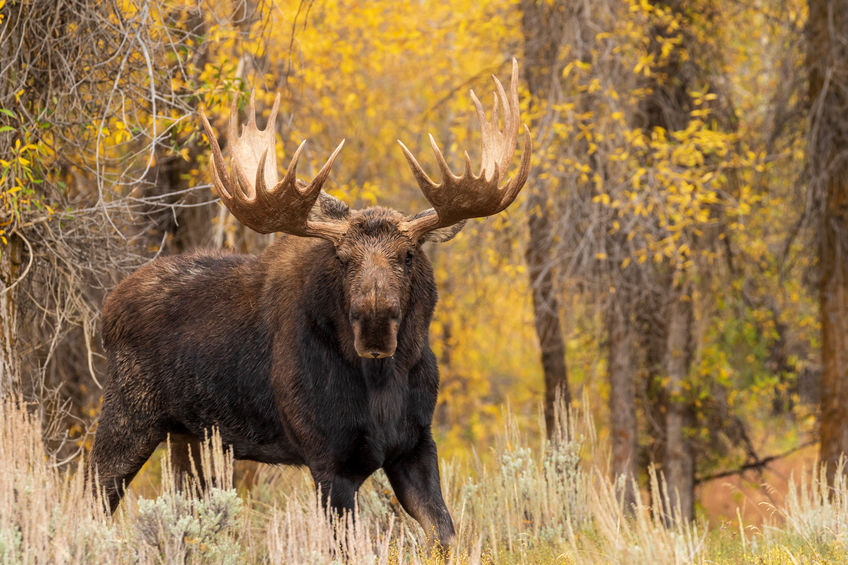
Moose are breathtaking creatures whose pure size and unique beauty would stop anyone in their tracks. If you live or spend a lot of time in southern Canada, or even parts of the Northeastern U.S., it is not unlikely that you will eventually cross paths with one in the wild.
Although a moose sighting may be exciting, it’s important to remember that you’re in the presence of a wild animal—one with 1,500 pounds of weight and 6-foot antlers no less—and you must treat it as such. With that being said, there are a few things you’ll want to keep in mind in case you encounter a moose during your outdoor travels.
If you spot a moose in the wild, keep your distance.
For the most part, if you give a moose their space, they won’t have a problem with you. Tempting as it may be, don’t engage with a moose trying to pet, feed, or get a closer look at them. Simply remain quiet and calm. If they approach you for a better look, back away slowly.
If you have a dog, you’ll want to make sure they’re leashed and leave the area quickly, as moose sometimes mistake dogs for wolves and interpret them as a threat. Look around for calves as well, so you don’t get between them and a protective cow.
Watch for signs of aggression.
While moose are not naturally antagonistic creatures, they can be aggressive—and dangerous—in certain circumstances. If a moose is feeling threatened by your presence, has calves nearby, or is in the midst of rutting season (mating season), they may show signs of being ready to attack. Look for the following indicators:
- Ears pinned back
- Hair on their neck or back standing up
- Urination
- Licking or smacking of the lips
- Jerking their head upward like a horse
If you think a moose might attack, back away slowly.
Usually, even if they appear to show signs of aggression, a moose will calm down once you give them their space. It’s important that you don’t panic and move suddenly, but slowly retreat and show them you’re not a threat.
Remember though that a moose’s behavior can change rapidly, so remain on your guard as you’re distancing yourself. Keep your eyes on the moose to watch for escalating or deescalating aggression and be ready to react quickly if they begin to charge.
If a moose does charge—run.
Moose assaults happen very rarely, but that doesn’t mean you shouldn’t be prepared for it. A charging moose is trying to drive you away, so the best thing you can do is listen to them! Again, once you put some distance in between you and them, they’ll more than likely back down. If you can, try to place an object between you and the moose for extra protection—a tree, car, building, large boulder, etc.
If a moose does make contact with you, curl into a ball to protect your vital organs. As soon as you’re able, continue retreating ASAP.
Encountering a moose in the wild is a little different than stumbling upon one near a populated camping or lodging area.
Wild moose aren’t accustomed to the presence of humans in the same way as ones that live in popular outdoor adventure locations. So, if you’re looking for the safest way to observe a moose in the wild, book your stay at Lawrence Bay Lodge!
Our area of Saskatchewan has a remarkable moose population, so heading out for a hike or some fishing on the grounds is a great opportunity to spot one in its natural habitat. This also allows us to offer some of the best opportunities for guided moose hunting in Canada.
Give us a call at 701-262-4560 today to reserve your chance to see (or bag) a bull this fall!

